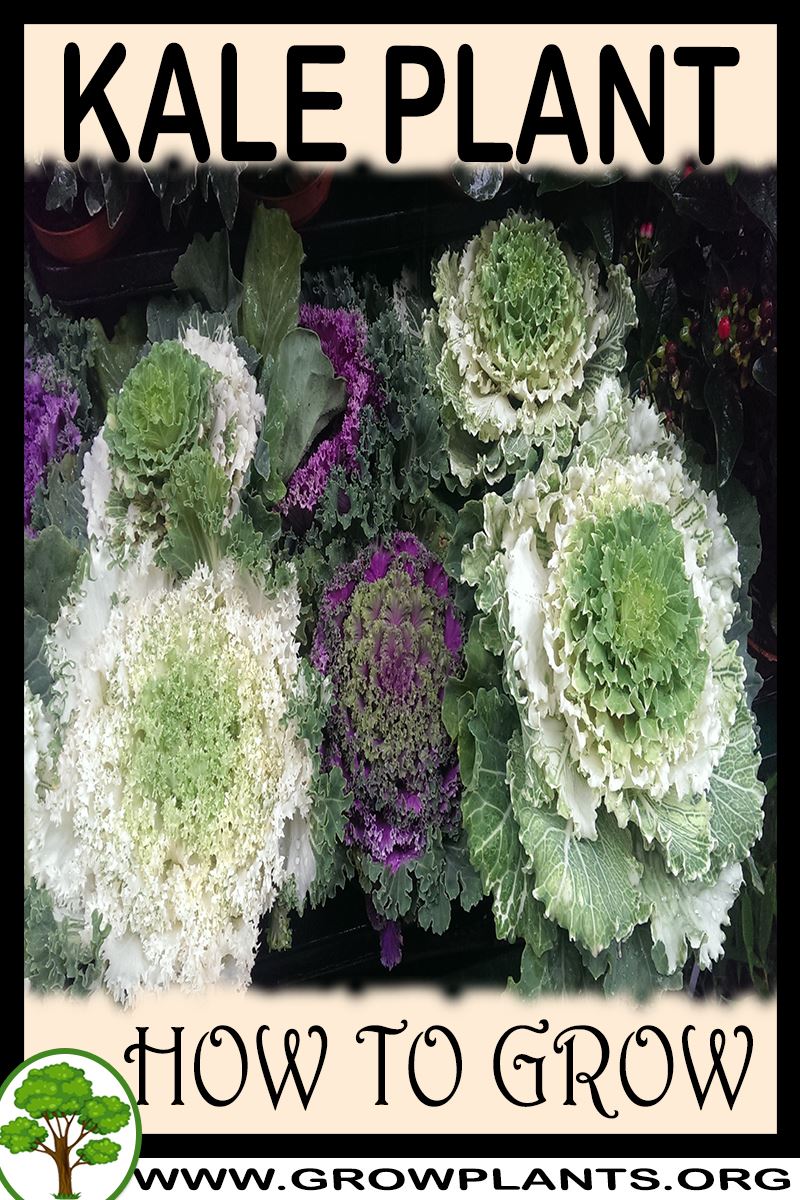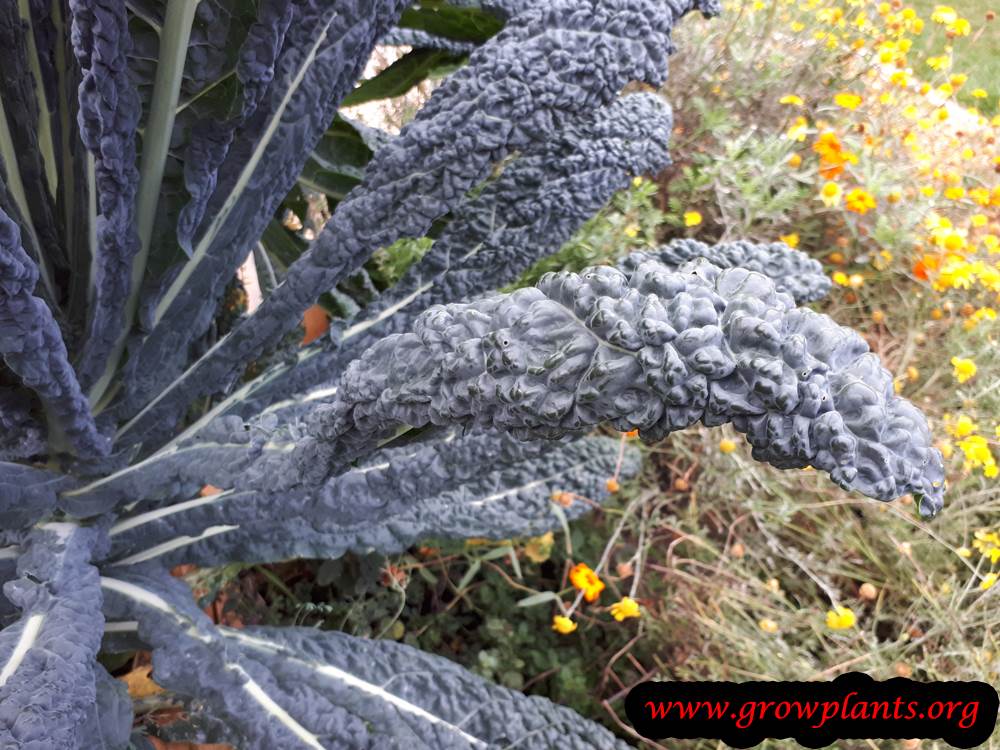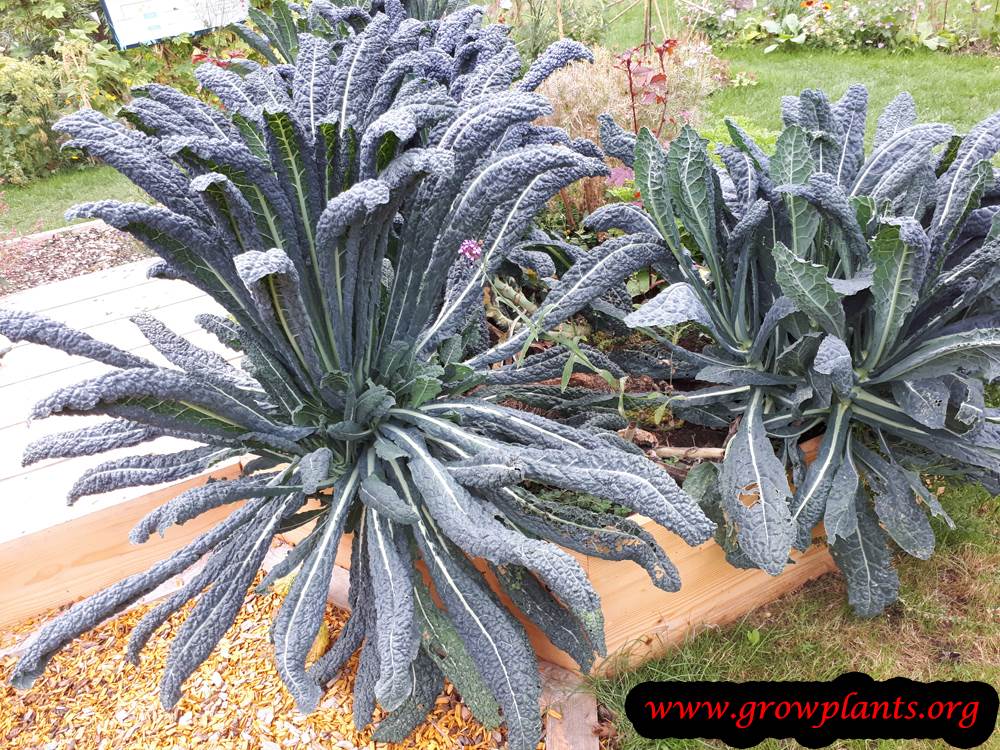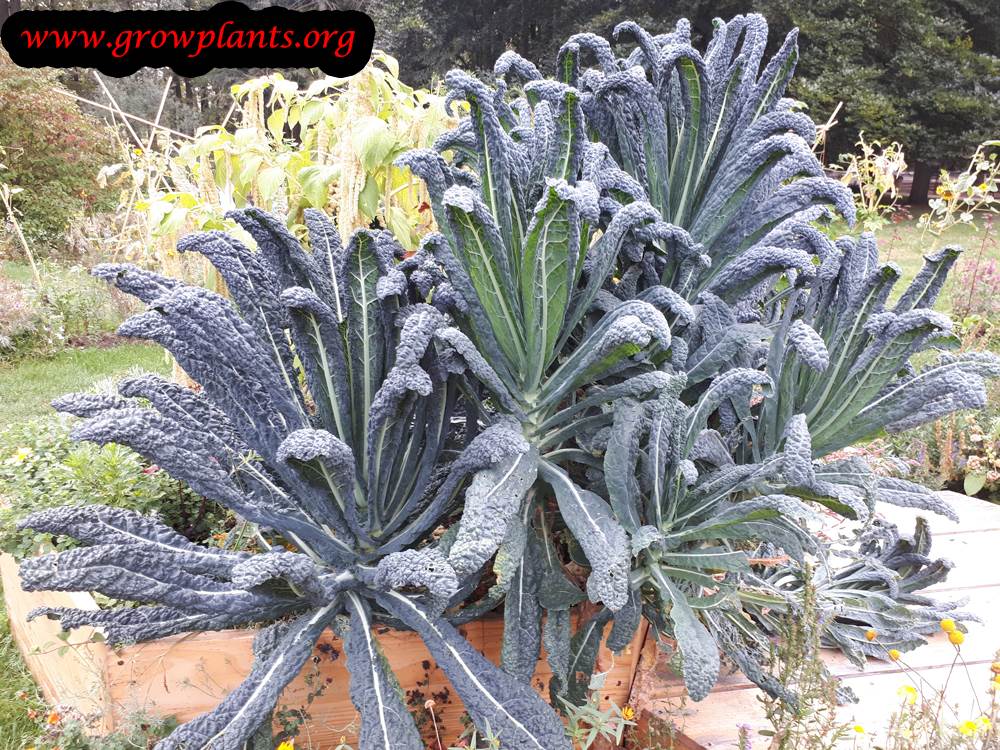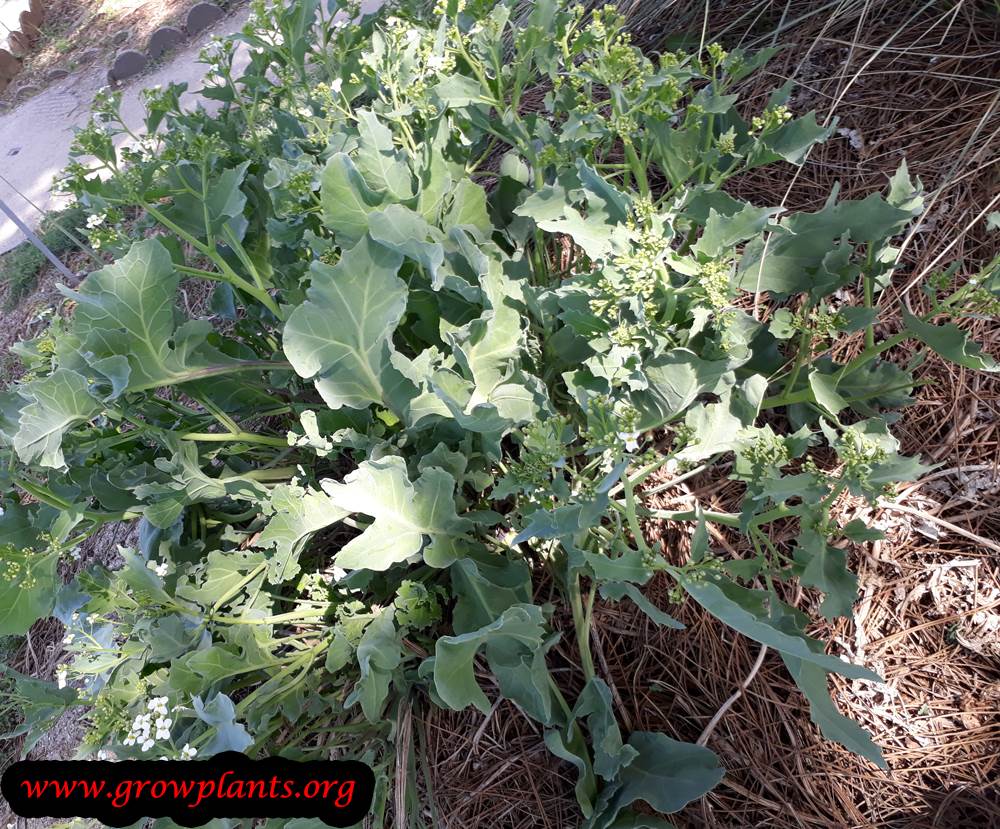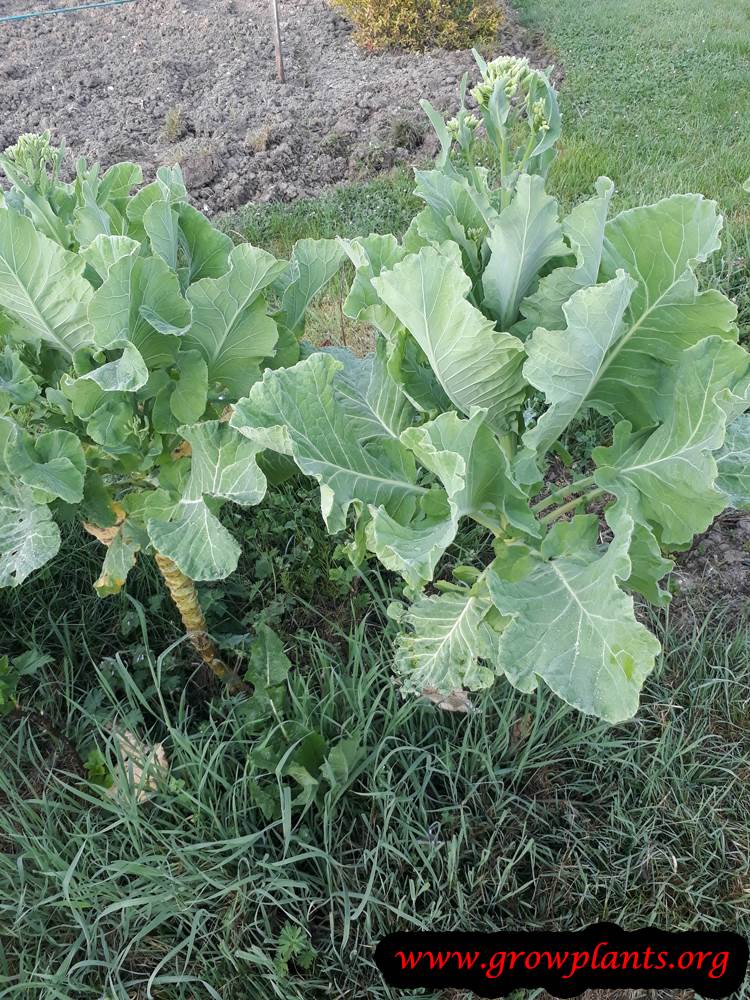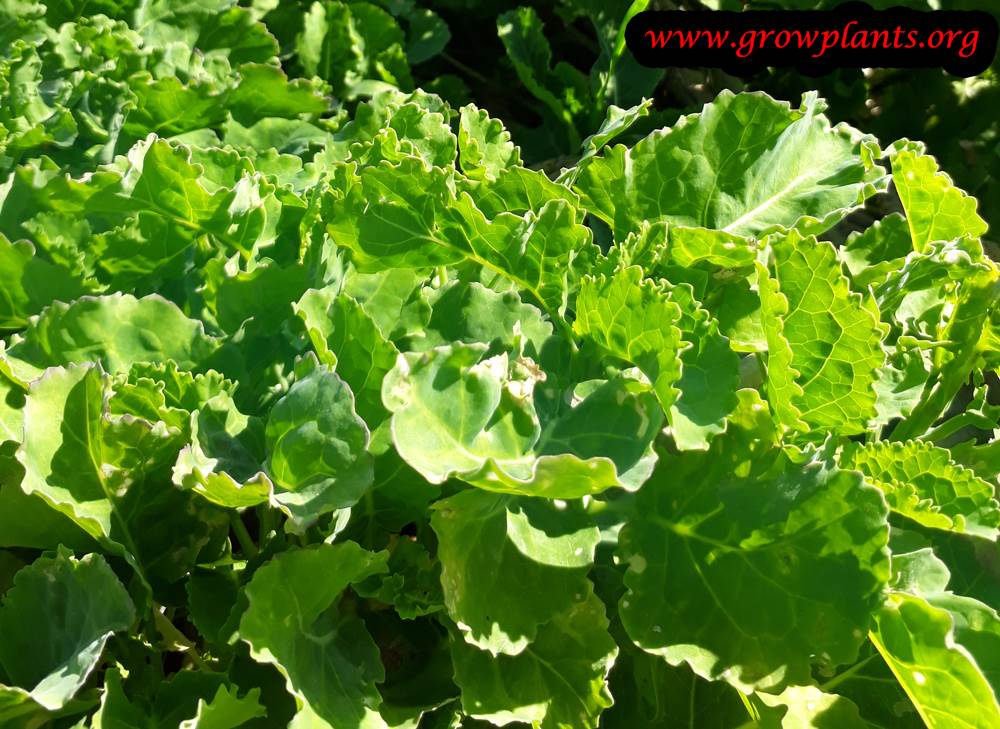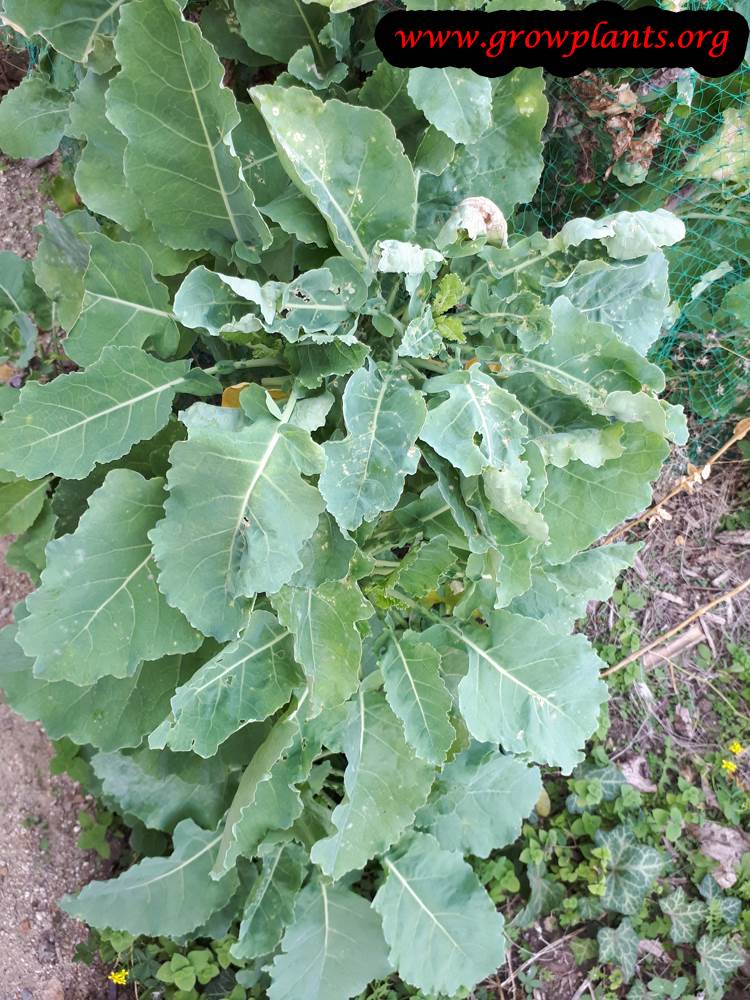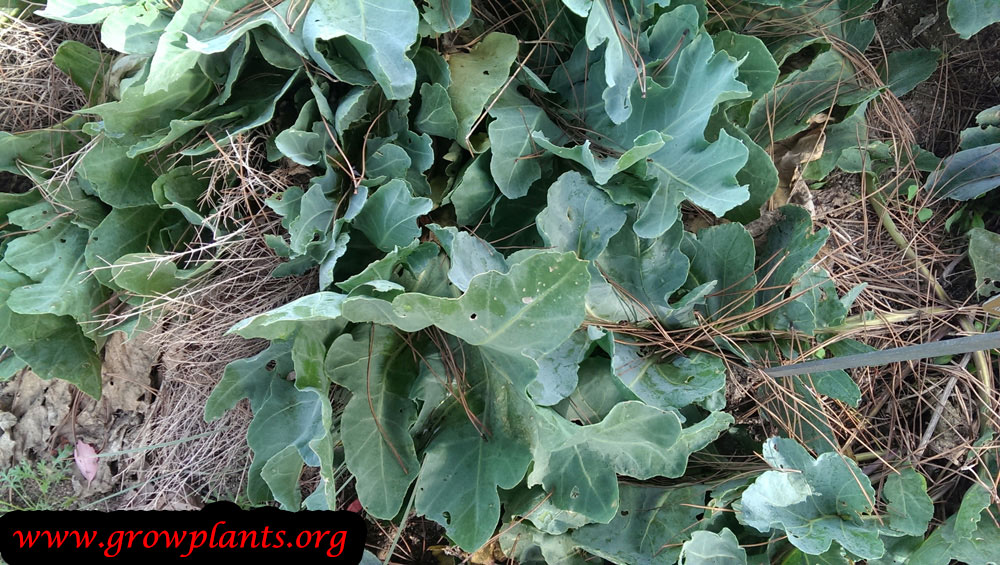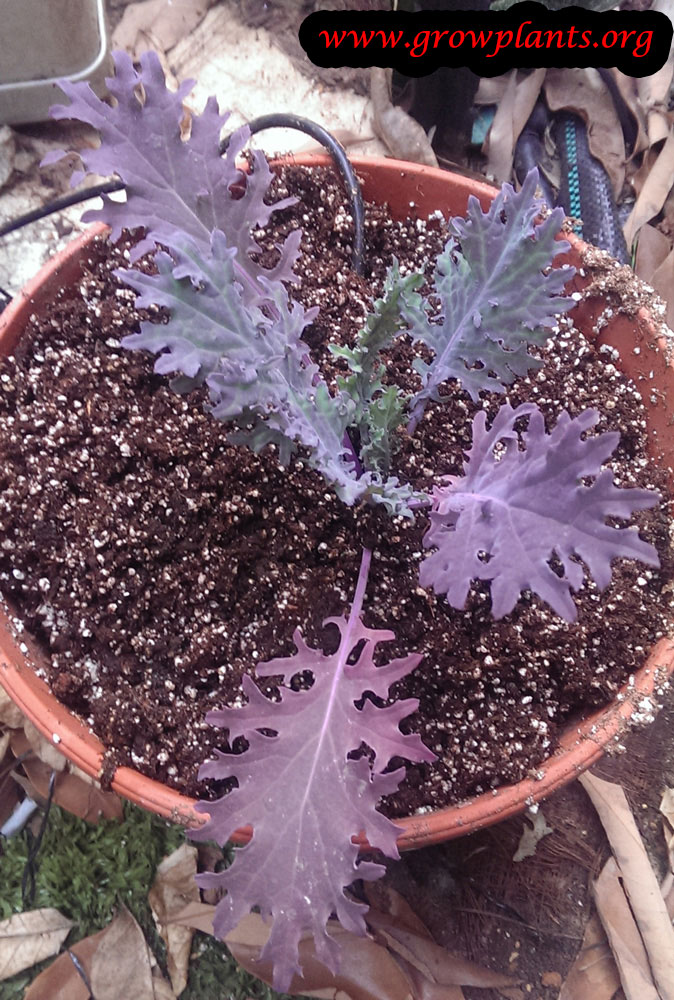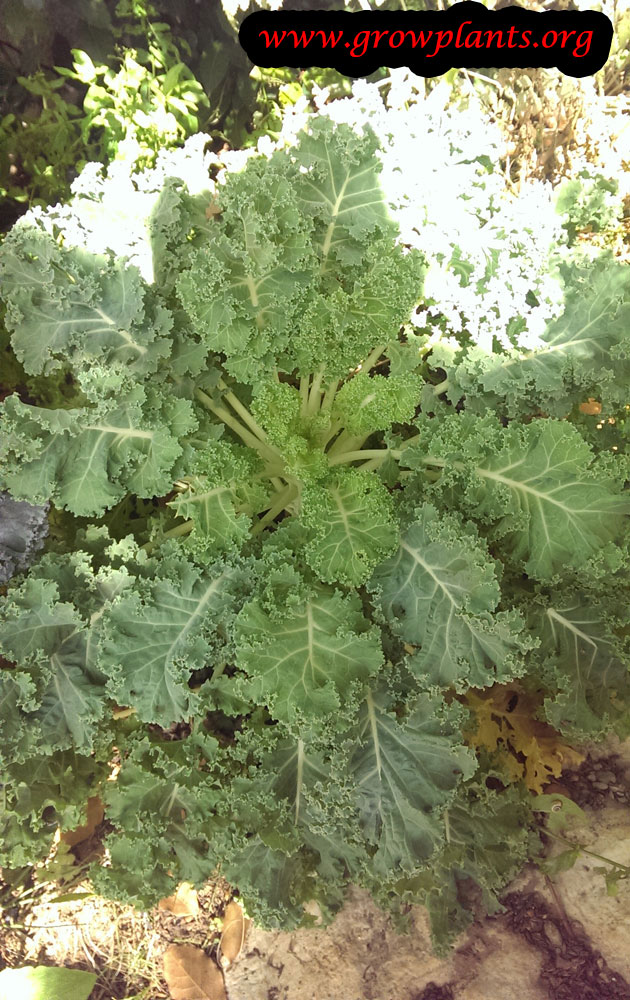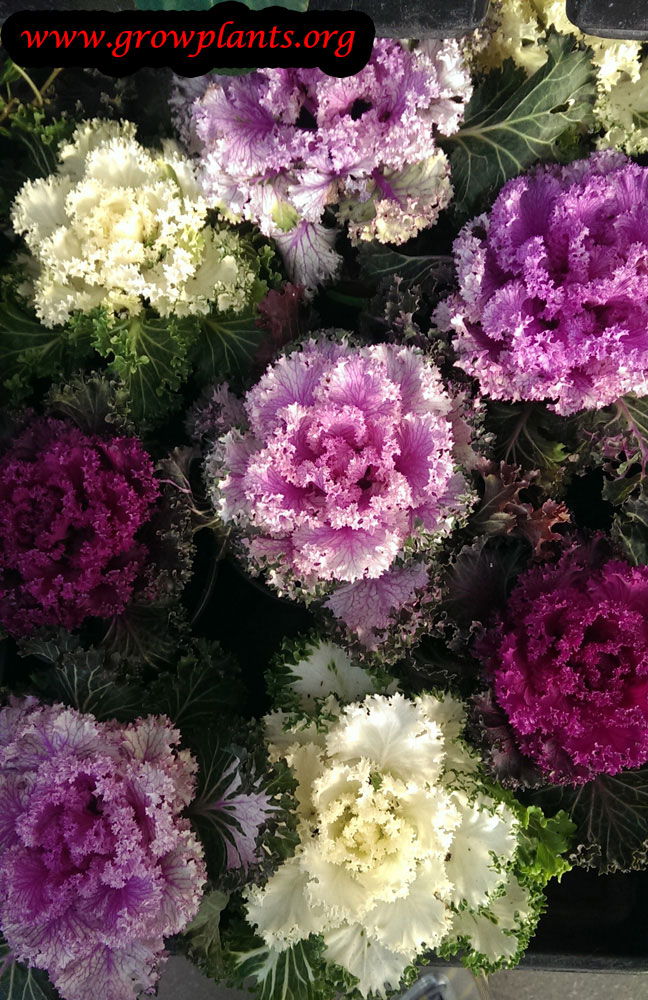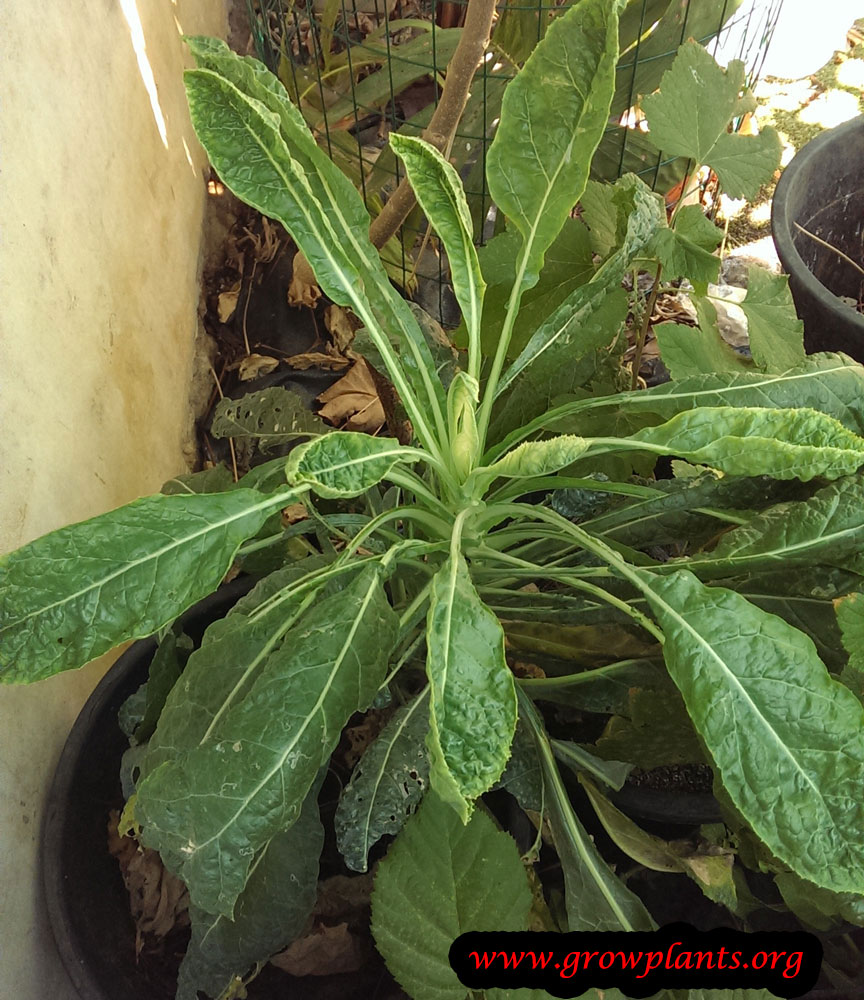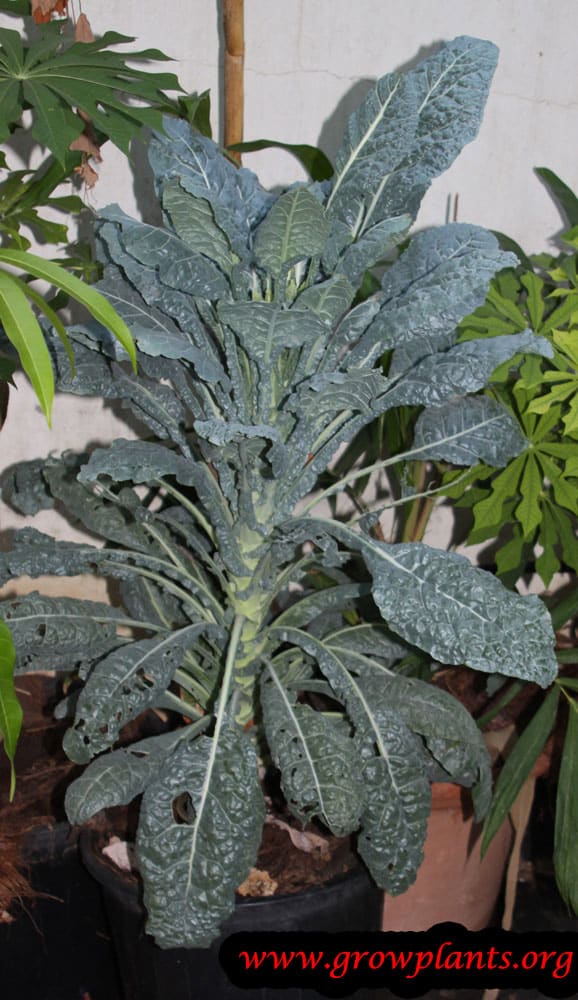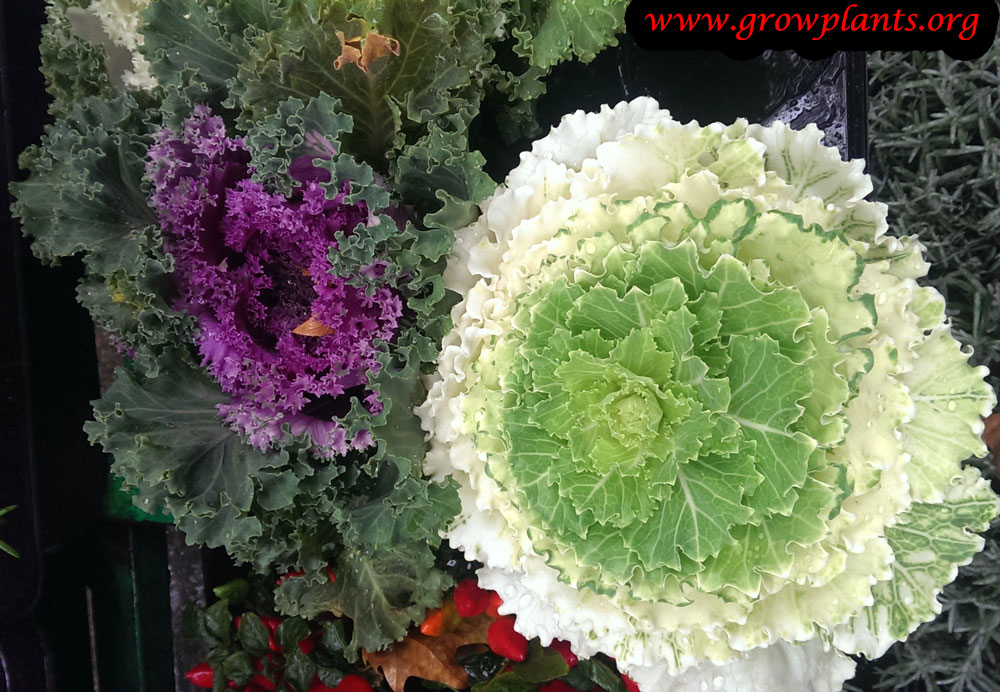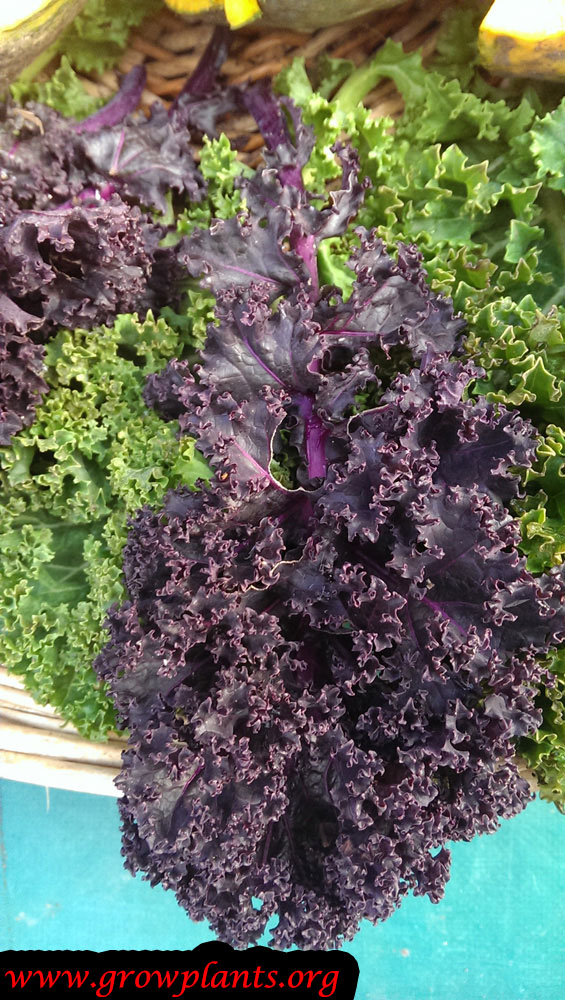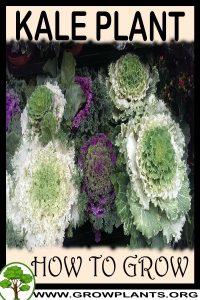
Kale grow and care – leaf plant of the genus Brassica also known as Borecole, Kale can grow as perennial evergreen, annual or biennial plant also used as ornamental, grow in temperate, mediterranean or subtropics climate and growing in hardiness zone 2-10a spring planting 10a-11 in autumn planting.
Kale leaves
Leaves colors can be: green, dark green, green blue, bright green, dark purple, purple green, purple, turquoise purple, red, green red, pink, turquoise, white, black, gray, burgundy, light blue, blue and all the shades between those colors. Edges color: light green, white or pink, leaves vein color can be in: green or purple.
Leaves size 5-30 cm, leaves figure can be: curly, wavy frizzy or flat sometimes with bumps, shape of the leaves: acicular, rhomboid, ovate, acuminate, pinnatisect, elliptic and more, edges of the leaf: crenate, dentate, entire, lobate, serrate, sinuate, curly and more.
Most varieties of kale prefer cold weather, in hot summer most varieties become bitter, several varieties not become bitter in the sun and some not become bitter in shade, after cooking less bitter.
Don’t be confuse with Collard greens
Flower color yellow, the small flowers grow on inflorescence.
Kale for sale – Seeds or Plants to Buy
How to grow Kale growing and care:
Rich soil that’s been well fertilized, Clean Larvae from the leaves
What is the best way to start growing?
Plant / Seedling / Seed / Vegetative Reproduction (only perennial species)
Is it necessary to graft or use vegetative reproduction?
No, but in some species it’s possible
Difficulties or problems when growing:
Sensitive to hot temperature, white butterfly can eat a lot of leaves and cause irreversible damage
Planting season:
Spring / Autumn / Winter
Pests and diseases:
Pieris (butterfly), prodenia (Spodoptera)
Pruning season:
When it’s start to bloom unless you want the seeds
How to prune:
Prune the beginning of the inflorescence
Size of the plant?
0.1-2 m, 4-80 inches
Growth speed in optimal condition:
Fast growing
Water requirement:
Average amount of water / Big amount of water
Light conditions in optimal condition for growing:
Full Sun / Half Shade / Full Shade
Is it possible to grow indoor as houseplant?
Yes (not all the varieties)
Growing is also possible in a planter /flowerpot / containers:
Yes
Blooming information
Bloom season:
Spring / Summer
General information about the flower
Small yellow flowers grow on inflorescence
Thinning the bloom:
Unless you want to save the seeds recommend thinning
Pollination is done by:
Bee and butterfly
Grow from seeds
Sowing requirement:
Planting when it’s started to be cold
Saving seeds until sowing:
Dry, Cold temperature
Sowing season:
Spring / Autumn / Winter
Planting spacing:
30-50 cm
Depth of Sowing:
0.5-1.5 cm
Conditions for seeds germinate:
moist drained soil
Watering requires for Seeds:
Big amount of water
Germination time:
7-20 days
Condition of seedling:
Fertilized ground, light shade, regular watering, and cold temperature
Do the seeds require burying?
No
Subspecies
Daubenton Kale – also known as Daubenton’s kale, perennial plant that survives around 5-6 years. Green leaves with serrate edges, the edges color: light green, white or pink. Plant flowers usually infertile.
Walking stick kale – perennial plant usually survives around 2-3 years, characterized by a woody stem, with green leaves, green to dark green large leaves can reach up to 20 cm.
Lacinato Kale – Biannual to perennial also known as Kale dinosaur, The leaves with curly edges the leaves with bumps and remained dinosaur skin, the color of the leaves: Green blue. Also possible to eat in the summer.
Curly Kale – This is the most popular type of Kale, Curly kale up annual biennial or triennial. The leaves curly and wavy with serrate edges, color: bright green to dark purple or a combination of purple green, sometimes the stems are purple.
Redbor Kale – annual plant is summer kale and picking the leaves in summer. Is usually the leaves bright purple, sometimes green, purple green or turquoise purple.
Russian Kale – is annual – biennial plant. Leaves oblong and serrated, the leaf color: green, green red or purple. In several subspecies the stems red, leaves can be with curled edges.
Siberian Kale – is annual – biennial plant. Green leaves in several subspecies the leaves turn red, some serrate and curly in the edge. Several subspecies curly the base of the leaf flat
Ornamental kale – is beautiful annual plants, leaves can be flat leaf with serrated hedge, whole serrated leaves, frizzy leaf, wavy leaf. Colors can be: pink, purple, turquoise, white, green, gray, burgundy, red, light blue, blue, green, green and all the shades between and more colors…
Vegetative Reproduction
Not in all the varieties possible to do vegetative reproduction
How to make Vegetative Reproduction in Kale?
Cuttings
The best time for vegetative reproduction in Kale:
Spring / Autumn
How much time does it take to grow roots in vegetative reproduction?
2-4 Weeks
What is the treatment for vegetative reproduction in Kale?
Put the cutting in water, moist soil shade and vegetative hormones
Edible leaves
Leaves harvesting season:
All year
How to harvest the leaves?
Trim in the base of the leaf
Information about leaves:
Depend on verities of the leaves size 5 to 30 cm. The leaves can be in different figure: and shapes, Edges of the leaf entire or different margin. The leaves colors can be: green, dark green, green blue, bright green, dark purple, purple green, purple, turquoise purple, red, green red, pink, turquoise, white,, gray, burgundy, light blue, blue and all the shades between those colors. Edges color: light green, white or pink.
Uses of Kale leaves:
Eaten raw, Salad, Used for cooking
Scientific name: Brassica oleracea – Acephala Group
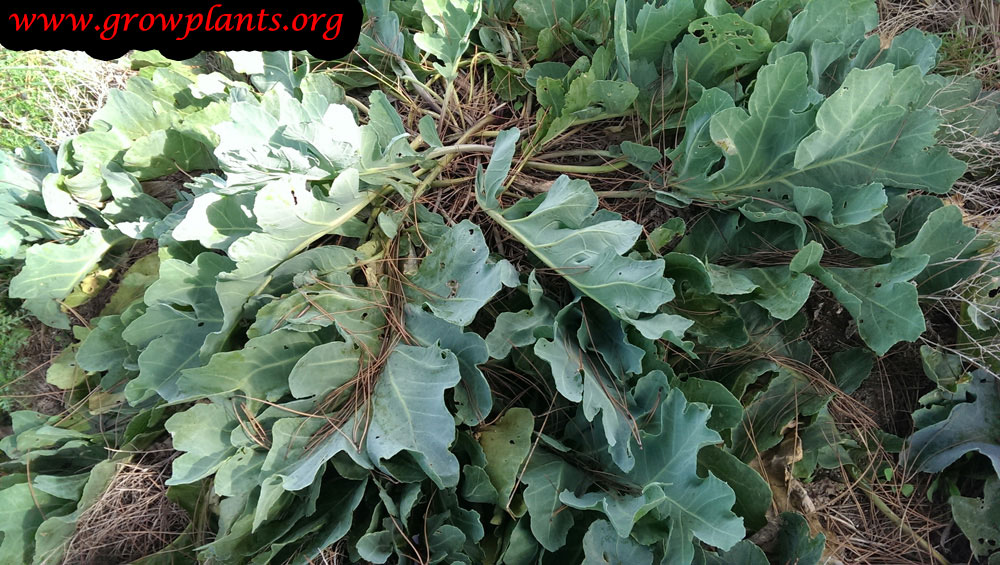

Categories
| Blooming Seasons |
|
|---|---|
| Edible Parts |
|
| Culinary uses |
|
| Flower colors |
|
| Climate |
|
| Harvest Season |
|
| Leaf color |
|
| Ornamental parts |
|
| Plant growing speed |
|
| Plant life-form |
|
| Plant Uses |
|
| Planting Season |
|
| Plants sun exposure |
|
| Watering plants |
|
| Hardiness zone |
|


